There can be your advertisement
300x150
Cheap Repair That Looks Expensive: 8 Proven Tips
The luxurious look of an interior depends not on the cost of materials, but on proper techniques and attention to detail
"Good renovation cannot be cheap" - this is what 90% of Russians think and immediately take loans for hundreds of thousands of rubles. Yet, experienced designers know the secret: the luxurious look of an interior depends not on the cost of materials, but on proper techniques and attention to detail.
Imagine the situation: one apartment is renovated for a million rubles with elite materials but looks tasteless. Another one - for 200 thousand rubles with budget materials, but looks expensive and stylish. The difference is that in the second case, the owners knew eight simple rules that turn cheap materials into luxury.
Main points from the article:
- Proper lighting creates 70% of the impression of luxury in interior design;
- A unified color palette of inexpensive materials looks more expensive than a mix of elite ones;
- Large format tiles and laminate visually double the cost of flooring;
- Hidden cornices and skirting boards transform budget curtains into designer ones;
- One accent element costing 10% of the budget elevates the status of the entire interior;
- Quality painting is more important than expensive wallpaper;
- Symmetry and order create the impression of a well-planned design;
- Proper furniture proportions are more important than its cost.
First tip: Lighting solves everything
The most common mistake in budget renovation is cutting corners on lighting. One bulb in the center of a room kills any, even the most expensive interior. Proper lighting can make a masterpiece out of even the simplest renovation.
The basic rule for expensive interiors: at least three levels of lighting in every room. General (ceiling fixtures), local (wall sconces, floor lamps) and decorative (nook lighting, picture lights).
It's not necessary to buy expensive chandeliers. You can take simple surface-mounted lights for 2-3 thousand rubles, but place them correctly. For example, three identical fixtures in a row above a bar counter look more expensive than one "fancy" chandelier for 20 thousand.
LED strips are the most budget-friendly way to add prestige. Lighting behind the TV, under kitchen cabinets, in niches creates that same "expensive" effect. A meter of quality strip costs 300-500 rubles, and the effect is worth a million.
Important note: all bulbs in the apartment should have the same color temperature. Mixing warm and cool light immediately reveals cheapness.
Second tip: Keep a unified color palette
Color is what the brain reads first when entering a room. A colorful interior screams cheapness, even if each element cost a fortune. A restrained palette makes the most budget renovation look expensive.
The rule of three colors: primary (60% of interior), secondary (30%) and accent (10%). Primary is usually neutral: white, beige, gray. Secondary is more saturated but calm. Accent is bright for details.
The most "expensive" color combinations: beige + white + gold, gray + white + black, cream + brown + copper. The most "cheap": bright contrasts, acid colors, gold and silver together.
Budget hack: buy all paint from one manufacturer in the same line. Even if colors seem different, they are guaranteed to blend together - colorists worked on that.
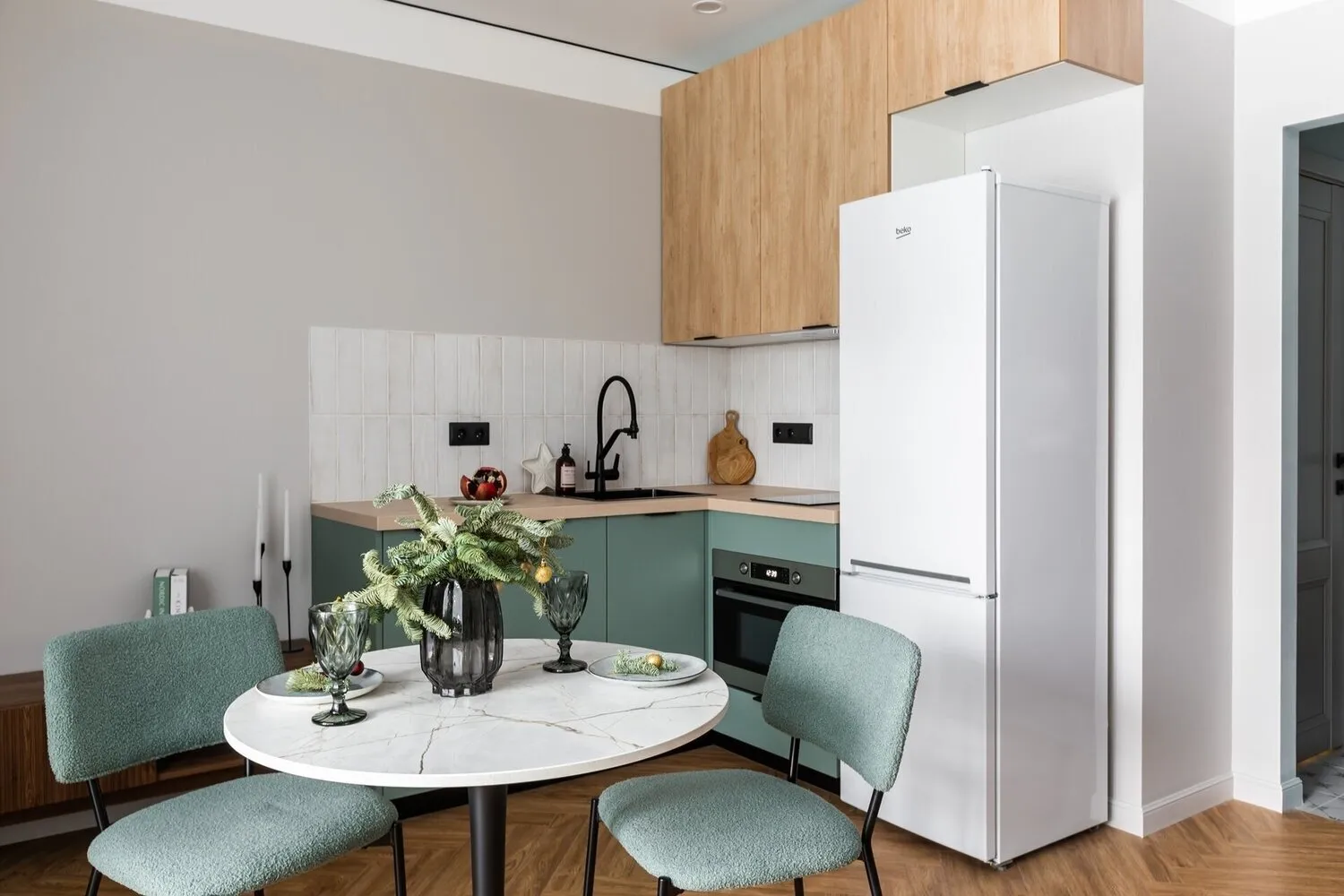 Design by Olga Tikhonina and Ekaterina Guseva
Design by Olga Tikhonina and Ekaterina GusevaThird tip: Choose large formats
Small tiles, narrow laminate, wallpaper with frequent patterns immediately devalue the interior. Large formats, on the other hand, create a feeling of luxury, even if they cost just a few rubles.
In the bathroom instead of 20x30 tiles, use 30x60 or 60x120. Visually, such tiles look much more expensive, and they cost only slightly more. Also, large format tiles require fewer grout joints - savings in labor.
On the floor, large-format laminate or tiles that look like wood with a width of 20 cm or more look like solid planks. Small tiles immediately reveal imitation.
On the walls, the same principle applies. Wallpaper with large patterns (or no pattern at all) looks more expensive than small motifs. Painted walls almost always look better than any wallpaper in the same price segment.
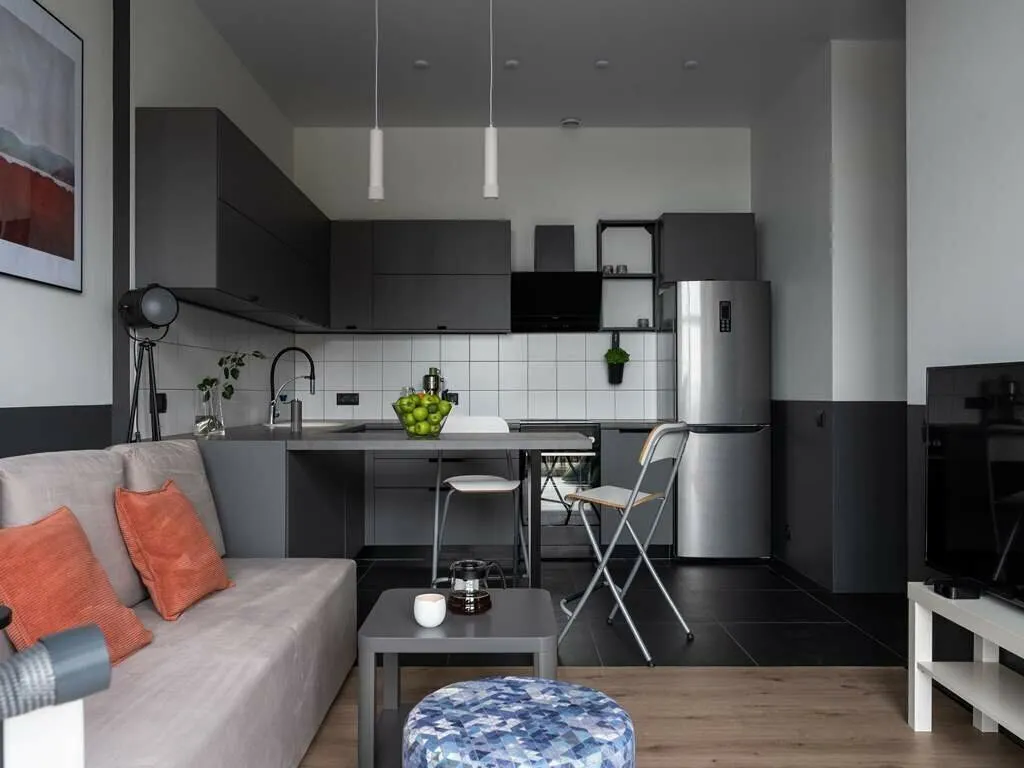 Design by Valeria Ryazantseva
Design by Valeria RyazantsevaFourth tip: Hide all technical elements
Visible cornices, skirting boards, outlets, pipes instantly devalue the interior. Hidden installation is a sign of expensive renovation, but it can be achieved with budget means.
Ceiling cornices in a niche made from gypsum board transform cheap curtains into designer ones. The niche is simple to make: lower the ceiling around the perimeter by 10-15 cm, mount a regular cornice in the recess. Curtains look like they're flowing from the ceiling.
Hidden skirting boards are another status symbol. Instead of surface-mounted skirting boards, make a gap between the floor and wall, which is closed with a special profile. The effect of floating walls is guaranteed.
Electrical work can also be hidden without extra costs. Outlets in wall color, frameless switches, wires in cable channels under wall color - all of this costs a few rubles but looks professional.
Fifth tip: One expensive element for the whole apartment
Psychology of perception works strangely: one truly high-quality item elevates the status of the entire interior. This can be a faucet in the bathroom, handles on kitchen cabinets or a light fixture in the hallway.
The rule is simple: spend 90% of the budget on the base (walls, floors, ceiling), and 10% on one high-quality accent element. This element should be visible and used frequently.
Good options: a quality faucet in the kitchen (seen and used constantly), a designer light fixture in the living room, expensive handles on all doors and cabinets. Bad options: expensive plumbing in a guest bathroom, elite tiles near the bathtub.
The rest of the elements can be simple but must be in a unified style with the accent item. Cheap faucets in bronze + expensive bronze light fixture = luxurious interior in guests' perception.
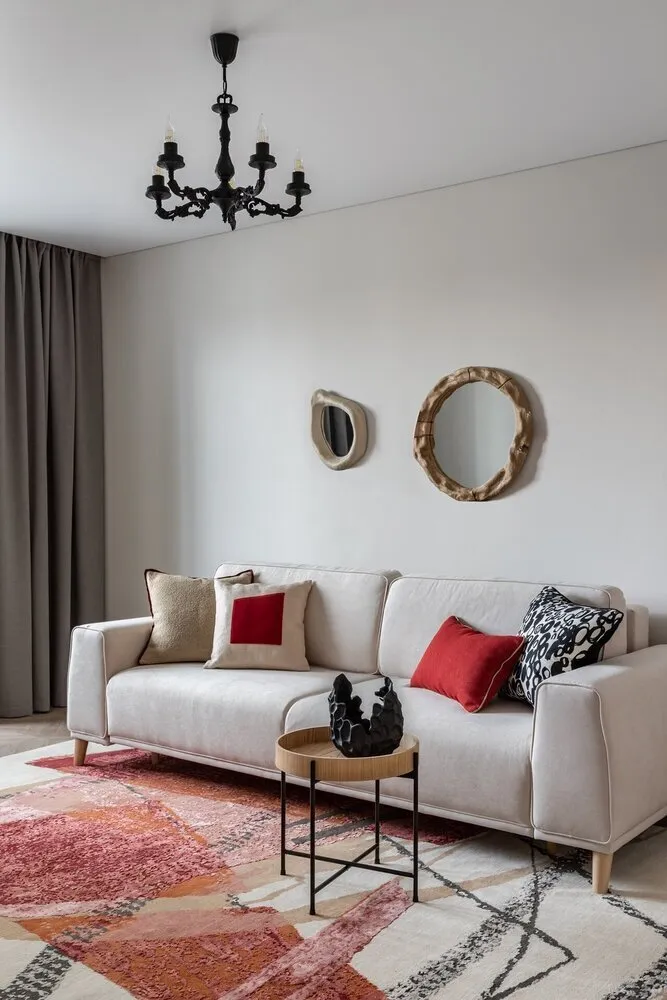 Design by Yana Gayskaya
Design by Yana GayskayaSixth tip: Quality painting is more important than quality paint
Uneven walls ruin any interior, even one finished in gold. Smooth walls make the most budget renovation look expensive. Preparing surfaces is a category of saving you cannot afford.
Paradox: cheap paint on a perfectly prepared wall looks more expensive than expensive paint on an uneven surface. Therefore, spend the majority of the budget on leveling, priming, and spackling.
If walls are very uneven, gypsum board leveling can be cheaper than plastering. Also, under gypsum board, it's easy to hide wiring and insulation.
A simple quality test: turn on side lighting and look at the wall. Visible unevenness - needs more work. In expensive interiors, walls are always perfectly straight, this is the foundation.
Seventh tip: Symmetry and order
Chaotically arranged elements look cheap, even if each costs a fortune. Symmetrical composition creates the impression of planning and luxury.
The rule works everywhere. Two identical sideboards next to the bed are better than one expensive one. Three identical lights above a bar counter are better than one "designer" one. Pair of sconces next to a mirror are better than one top fixture.
Even simple elements look prestigious in the right composition. The main thing is to maintain proportions and spacing. Paintings should hang at the same height, outlets at the same level, lights at equal distances.
Order is just as important as symmetry. An expensive interior is always neat: no extra wires, all items in their place, clean surfaces. The most luxurious renovation in chaos looks cheap.
Eighth tip: Proper furniture proportions
Incorrectly sized furniture can ruin any interior. A small sofa in a large room, an oversized cabinet in a small one - classic mistakes that immediately reveal the absence of a design approach.
- The main rule: furniture should occupy 30-40% of the room area. Less - the room seems empty and under-decorated, more - cramped and cluttered.
- Furniture height is also important. In rooms with 2.7m ceilings, furniture higher than 90 cm visually "presses down". Exception - one tall accent piece: shelf, floor lamp, tall plant.
- Cheap furniture can be "elevated" with proper arrangement. Grouping by function, maintaining passages at least 80 cm wide, creating a compositional center - all of this costs nothing but dramatically changes perception.
The most important rule for a cheap renovation that looks expensive: it's better to do less but better, than more but poorly. One perfectly renovated area makes a bigger impression than an entire apartment in the "almost ready" stage. Therefore, renovate in stages, perfecting each one to perfection.
Cover: Yana Gayskaya's Design Project
More articles:
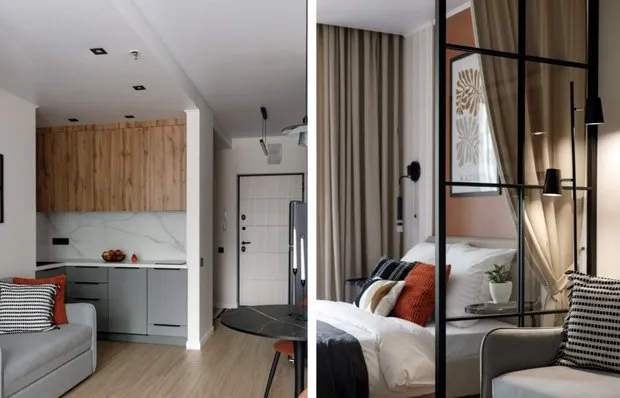 How to Organize Space in a Small Apartment: 7 Great Design Solutions
How to Organize Space in a Small Apartment: 7 Great Design Solutions Balcony as Office: Transforming 3 m² into a Fully Functional Workspace
Balcony as Office: Transforming 3 m² into a Fully Functional Workspace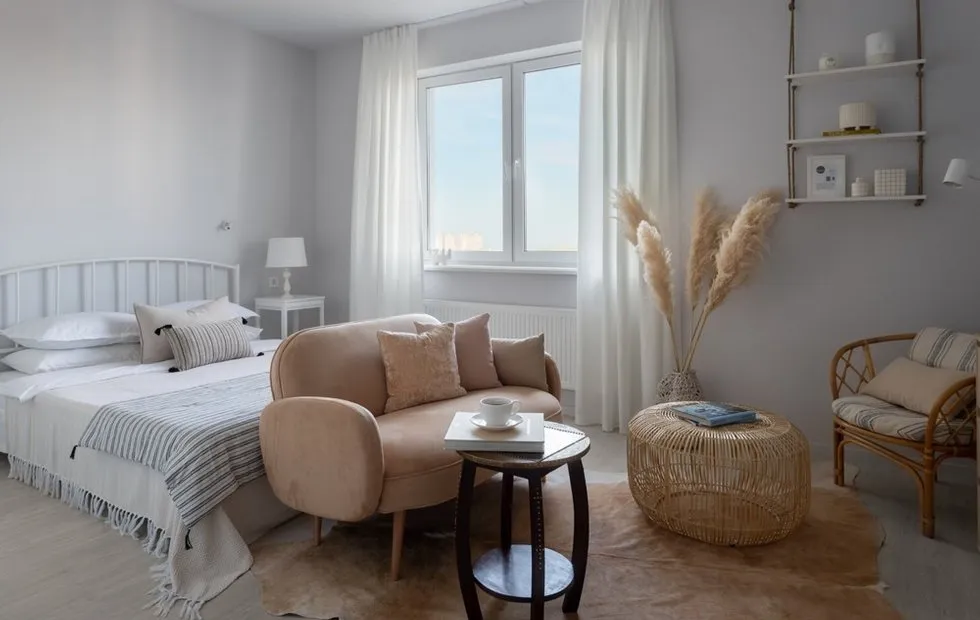 7 Mistakes in Planning That 90% of Owners Regret After a Year
7 Mistakes in Planning That 90% of Owners Regret After a Year Modern Furniture for Home and Outdoor Use: 10 Trendy Finds
Modern Furniture for Home and Outdoor Use: 10 Trendy Finds Kitchen 6 sq. m in a Khrushchyovka: How to Place Everything Necessary and Make It Look Good
Kitchen 6 sq. m in a Khrushchyovka: How to Place Everything Necessary and Make It Look Good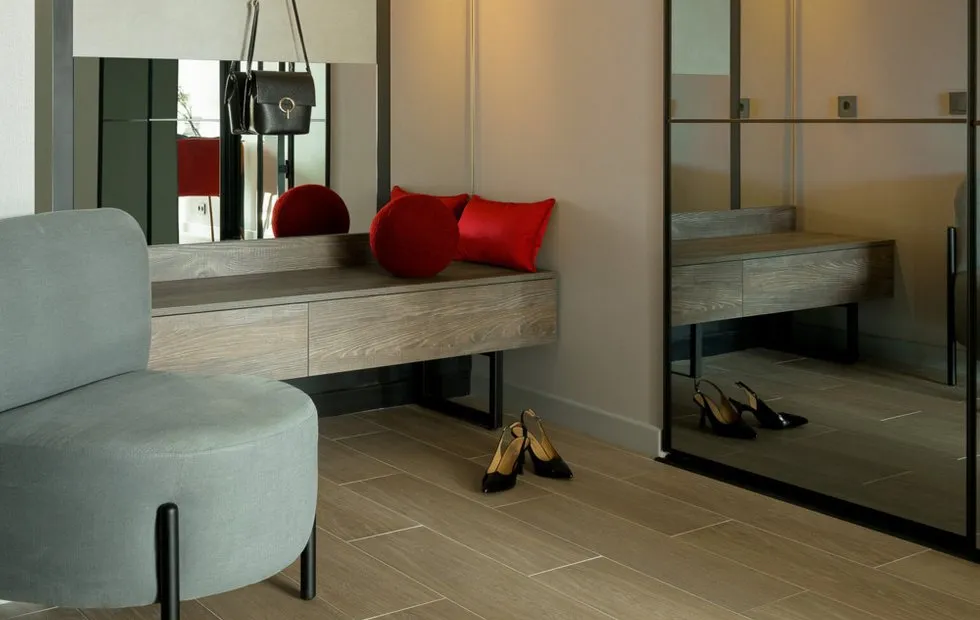 Corridor in Old Buildings: How to Turn a Passage Room into a Functional Zone
Corridor in Old Buildings: How to Turn a Passage Room into a Functional Zone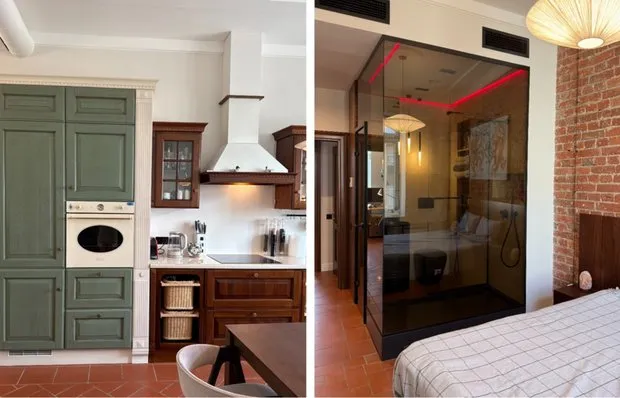 Wow 82 m² Apartment in Old Foundation with Glass Shower in Bedroom
Wow 82 m² Apartment in Old Foundation with Glass Shower in Bedroom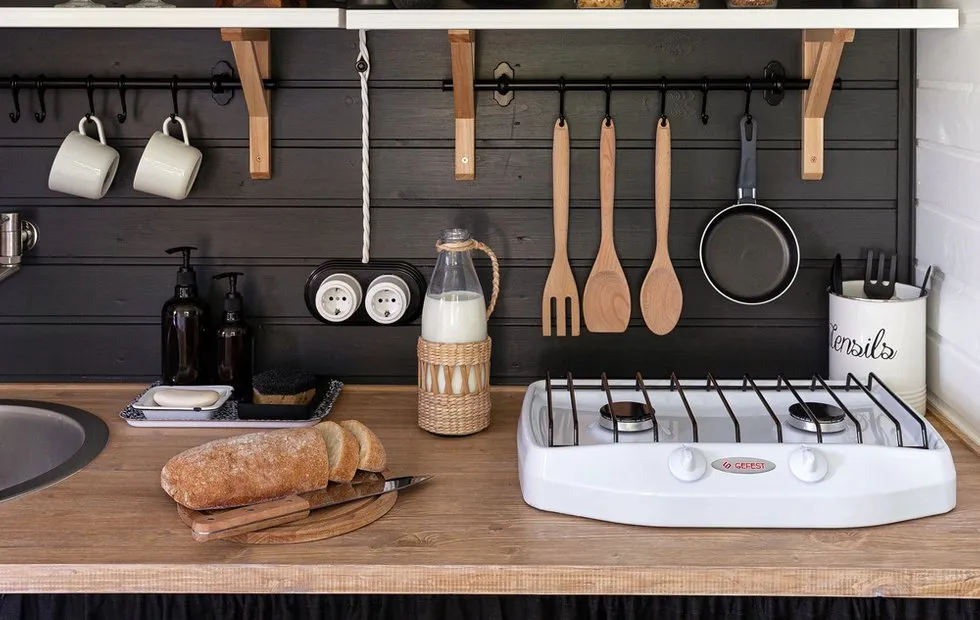 Kitchen for 5 Thousand Rubles: How to Make a Stylish Cabinet Yourself
Kitchen for 5 Thousand Rubles: How to Make a Stylish Cabinet Yourself